Question
 chichi&coco
chichi&coco
I have two "Pomeranian-mixed" dogs...a male and a female they are from the same liter. They're about 10-11 months old. They bark uncontrollably and I've researched different techniques like spraying them with water when they bark or making a rattle noise. But they don't work they just bark even more. I just got the male dog, he was my fathers, so he pees and everywhere bites everything he can find. I got him sum bones to chew on but he still does it...
AnswerThe key to most behavior problems is approaching things using the dog's natural instincts. Dogs see all the people and dogs in the household as a pack with each having their own rank in the pack and a top dog. Life is much easier if the 2 legged pack members outrank the 4 legged ones. You can learn to play the role of top dog by reading some books or going to a good obedience class. A good obedience class or book is about you being top dog, not about rewarding standard commands with a treat. Start at http://www.dogsbestfriend.com/ For more on being top dog, see http://www.dogbreedinfo.com./topdogrules.htm
The above are fundamental techniques I suggest for almost all behavior problems and should help with barking too. The truth is, Labs usually don't bark that much and I don't have methods of controlling barking that I have been successful using. It isn't even in the manual for them. The manual does have a suggested reading list. One I have read is The Other End of the Leash by Patrica McConnell.
She suggests the first step is not to yell at the dog. After all, usually if one dog starts to bark, any others around will to. So yell at your dog when it barks and it is happy to have you bark with it. Quietly tell it enough and walk over to it with a treat, doesn't need to be very big. Let him know you have it and use it to lure him away from what he is barking at if anything, and praise him as he shifts his attention to the treat and away from barking. Once away from where he was barking, give him the treat.
Unlike much of my other advice, this is not something I have tried and found works. It does come from a reliable source and I would trust it more than something I found on a website I know little about. I just hope she isn't smart enough to figure out if she barks, she gets a treat plus your attention.
This can be applied to older dogs too. Biggest difference is the longer time after eating or drinking before they are ready to relieve themselves. If a dog has been living where it could keep its living space clean, it should quickly catch on. The important part will be teaching it that if it goes to the door, you will let it out. It will be much more difficult if the dog was forced to live in its filth. You will need to learn to read the dog and learn its schedule, and when it needs to go out. Keep it in sight, closing doors and setting up gates. Some people even leash the dog to themselves. I have used a tie down at my computer desk.


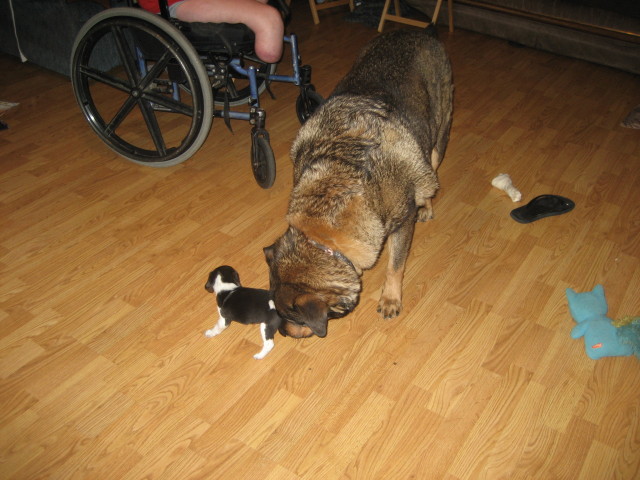 Getting a puppy and dog to get along
Question
RC and Kayleigh
Last Tuesday our dog for 14 ye
Getting a puppy and dog to get along
Question
RC and Kayleigh
Last Tuesday our dog for 14 ye
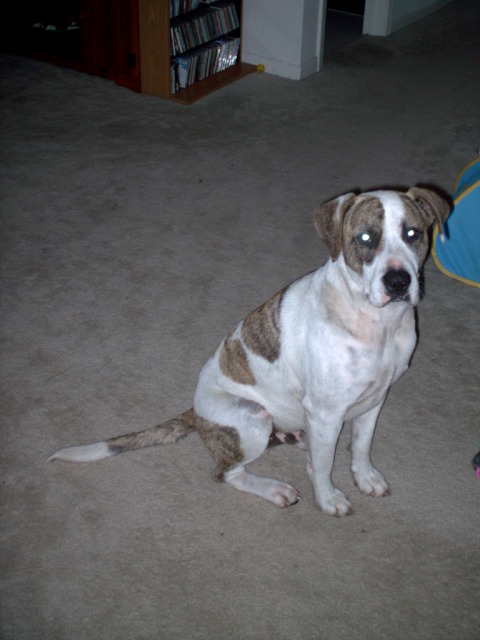 dog jumping fence
Question
dog
I have a 3 year old Staffordshire/Lab that
dog jumping fence
Question
dog
I have a 3 year old Staffordshire/Lab that
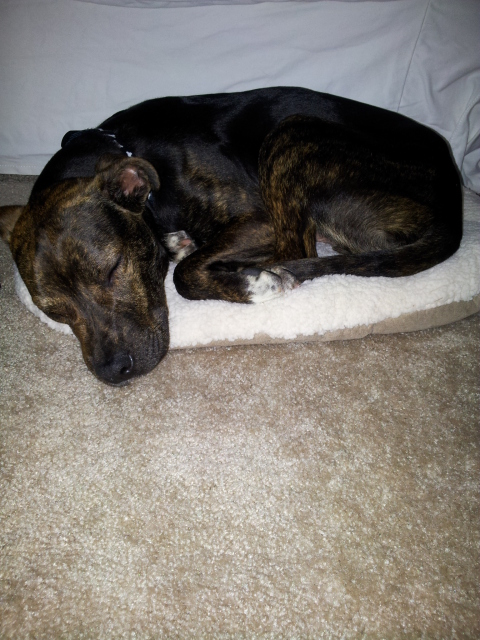 8 month old rescue has crate-phobia
Question
His name is Pepper
Please help. We adop
8 month old rescue has crate-phobia
Question
His name is Pepper
Please help. We adop
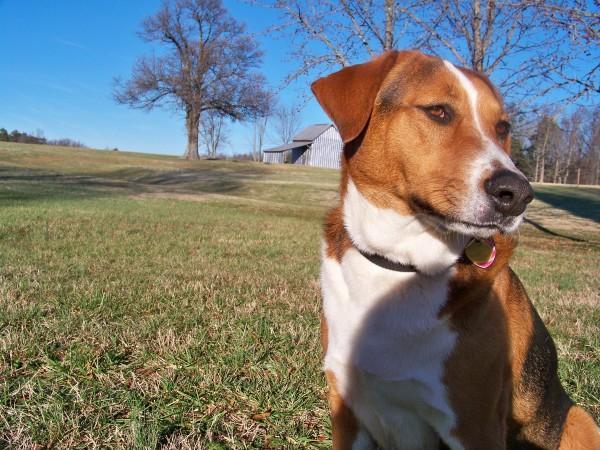 My dogs agression
Question
This is my dog
Hi Shelley!
I have a question f
My dogs agression
Question
This is my dog
Hi Shelley!
I have a question f
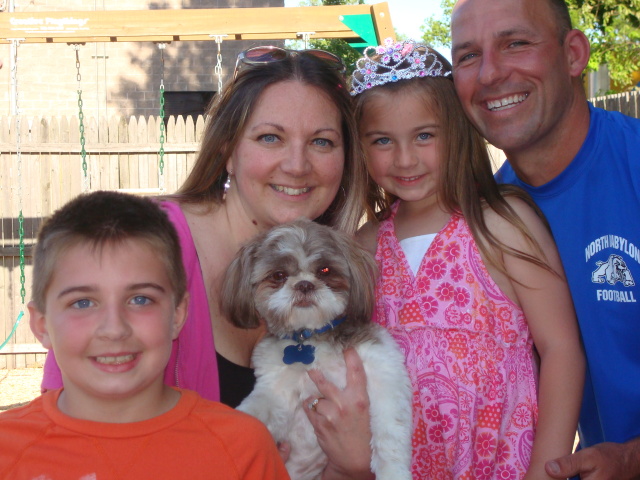 18month old sweet shih tzu starting to growl at me
Question
our family
Hi Valentina,
I have recently beco
18month old sweet shih tzu starting to growl at me
Question
our family
Hi Valentina,
I have recently beco